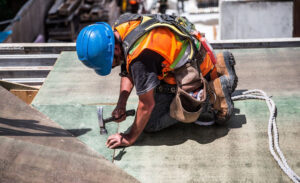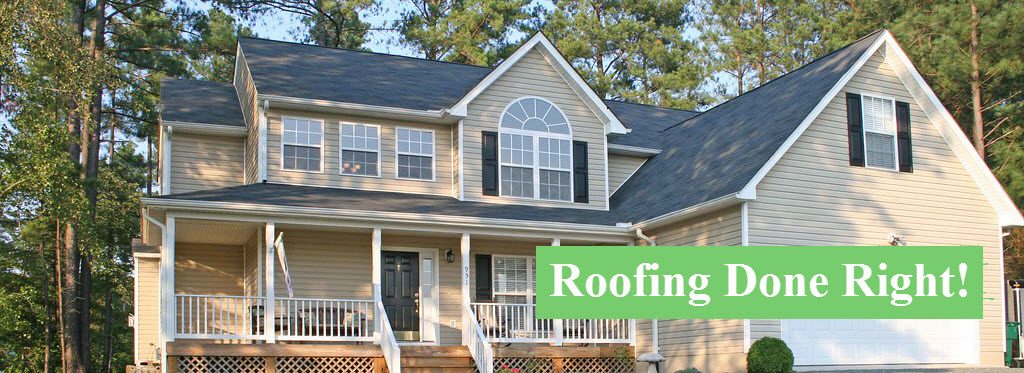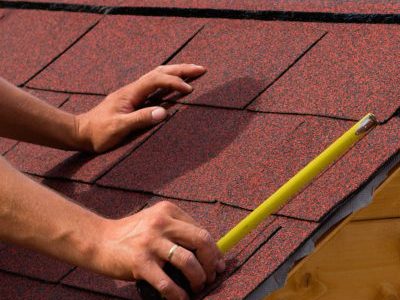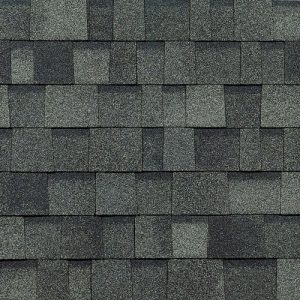Roofing safety is of utmost importance to prevent accidents and injuries while working on rooftops. Whether you’re a professional roofer or a homeowner performing DIY repairs, it’s essential to follow safety guidelines to minimize risks. Here are some key safety practices to keep in mind when working on roofs:

- Use proper safety equipment: Always wear appropriate safety gear, including a hard hat, non-slip footwear, gloves, and eye protection. Additionally, use a fall protection harness and secure yourself to a sturdy anchor point when working at heights.
- Inspect the work area: Before starting any roofing work, inspect the roof for potential hazards such as loose shingles, weak spots, or debris. Clear the work area of any obstacles and ensure there are no power lines overhead.
- Check the weather forecast: Avoid working on the roof during inclement weather conditions such as rain, high winds, or icy conditions, as these can increase the risk of accidents and falls.
- Use proper ladder safety techniques: When accessing the roof, use a sturdy ladder that extends at least three feet above the roof edge. Secure the ladder at the base and use ladder stabilizers if necessary. Always maintain three points of contact when climbing or descending the ladder.
- Practice safe lifting techniques: When carrying materials or equipment onto the roof, use proper lifting techniques to avoid strain or injury. Bend your knees, keep your back straight, and lift with your legs rather than your back.
- Be cautious of roof edges: Exercise caution when working near roof edges, as they pose a significant fall hazard. Install temporary barriers or warning lines to prevent accidental falls, and avoid stepping on or near roof edges whenever possible.
- Secure tools and materials: Keep tools and materials securely fastened to prevent them from falling off the roof and injuring workers or bystanders below. Use tool belts, buckets, or tethering systems to secure items while working.
- Communicate with coworkers: If working as part of a team, maintain clear communication with coworkers to coordinate tasks and avoid accidents. Use hand signals or two-way radios to communicate effectively, especially in noisy environments.
- Take breaks and stay hydrated: Roofing work can be physically demanding, so take regular breaks to rest and rehydrate, especially on hot days. Avoid working in extreme heat or direct sunlight for extended periods.
- Receive proper training: Ensure that all workers are adequately trained in roofing safety procedures and techniques before starting work on the roof. Provide ongoing training and supervision to maintain a safe work environment.
By following these roofing safety guidelines, you can reduce the risk of accidents and injuries while working on rooftops. Prioritizing safety not only protects workers from harm but also ensures the successful completion of roofing projects with minimal disruptions.


 If you’ve experienced roofing damage, filing a claim with your insurance company can help cover the costs of repair or replacement. But before you start the process you need to understand your coverage. Homeowners insurance is a type of insurance policy that provides financial protection for your home and personal property in case of damage or loss. It’s important to understand what homeowners insurance covers and what it does not cover. The part of your policy we are concerned with here is dwelling coverage. It covers the cost of repairing or rebuilding your home if it’s damaged or destroyed by covered events, such as fire, wind, or hail. It typically covers the structure of your home, including the walls, roof, and foundation.
If you’ve experienced roofing damage, filing a claim with your insurance company can help cover the costs of repair or replacement. But before you start the process you need to understand your coverage. Homeowners insurance is a type of insurance policy that provides financial protection for your home and personal property in case of damage or loss. It’s important to understand what homeowners insurance covers and what it does not cover. The part of your policy we are concerned with here is dwelling coverage. It covers the cost of repairing or rebuilding your home if it’s damaged or destroyed by covered events, such as fire, wind, or hail. It typically covers the structure of your home, including the walls, roof, and foundation. There are several types of
There are several types of 
 Both laminated roof shingles as well as conventional 3-tab shingles offer efficient defense against wind. They likewise, defend against damaging water infiltration from wind-driven rainfall, offering you improved defense against the elements. In the roof market, laminated shingles tiles are more often described as being “architectural” because they’re specifically engineered to offer dimension to the roof covering by way of each individual roof shingles’ shape, cut and thickness. Therefore, the movement towards 3-tabs to architectural laminated tiles was basically for aesthetic purposes.
Both laminated roof shingles as well as conventional 3-tab shingles offer efficient defense against wind. They likewise, defend against damaging water infiltration from wind-driven rainfall, offering you improved defense against the elements. In the roof market, laminated shingles tiles are more often described as being “architectural” because they’re specifically engineered to offer dimension to the roof covering by way of each individual roof shingles’ shape, cut and thickness. Therefore, the movement towards 3-tabs to architectural laminated tiles was basically for aesthetic purposes.